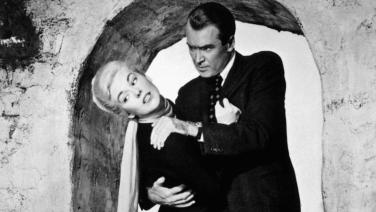It is the cinema in continuous dialogue with its three eras: past, present and future.

Just as novels, stories, poems, centuries and styles from the history of literature (Darío, Dickens, Didion, Dinesen, Dostoevsky, Duras, Dylan, Eco, etc.) coexist and mix with each other in more or less ordered alphabetical harmony in our libraries, so in a cinema like the one in Tabakalera all the different possible periods, durations, styles, sounds and images from the history of cinema alternate and mutually enrich each other.
This composition of films, one after another, generates a permanent history full of links and dialogues between the images. It is as if in a seance in Victorian England all the spirits appear at the same time to tell us with several different voices what is on the other side: “Light, more light.”
Let us therefore propose a possible theory in which the cinema and its history are in reality a single continuous and endless film that is projected uninterruptedly in all the cinemas in the world: one last walk by Agnès Varda along a beach in Normandy on which Buster Keaton dances a very slow tango with Kaurismäki, while on the horizon the siren of a Russian battleship sounds in black and white, for example.
It is the cinema in continuous dialogue with its three eras: past, present and future.
In this theory, in its “closest” dimension, it is important to ask about the preceding and subsequent film: Where do we come from? Where are we going? In that proximity of the books and films “that you can touch” there are sometimes flashes that no official book about the history of film can ever provide. This is when the viewer becomes an editor of their own history of cinema: a custodian of an experience and memory that unites all the images and sounds of the world in their own particular way.
This theory also has a “distant” dimension relating to the future: the possibility that in a cinema like ours all the films that have not yet been made are already being shown. And I return to the spiritualist group of Victorian England: watching films allows us to guess the future of cinema. This repeated gesture of one hand approaching another (Akerman, Bresson, Cocteau, Denis, Kiarostami, Lacuesta, Martel) will be repeated over and over again in films that do not yet exist.
This is the framework within which we present our summer season: a review of that permanent history of cinema from the 1920s to the 1980s through restored copies and films recently re-released at international festivals.
The programme connects directly with one of the key objectives of the partners of this shared screen: to offer our public the chance to rewrite all the possible stories of the cinema over and over again. The San Sebastian Film Festival launched its Klasikoak section two years ago, in which the latest restored copies of major films are presented each year. Nosferatu continues reviewing key historical authors. The Basque Film Library has just delighted us with the copies featuring the great Buster Keaton restored by Cineteca di Bologna. The EQZE school has a special subject entirely dedicated to reflecting on archive and memory. And at Tabakalera, in direct collaboration with everyone else, we try to orchestrate a permanent dialogue between that past and the future that approaches.
And what if, starting in the new academic year, the restoration teams working on these film treasures could call in at our cinema every month to tell us about the research and restoration processes they carry out with this film material? In the Zineskola, classes are already being given by the leading international experts, but now the idea is to open this up to the cinema audience, as happened in the session in which the restorer Cecilia Cenciarelli from Cineteca di Bologna told us the secrets behind the new copy of Sherlock Jr. (Buster Keaton, 1924). There are terms that must slowly start to become familiar, and for this reason this cinema is also a Zineskola classroom, with original copies of first-generation nitrate film, metres of film, scans of the original negatives, remastering, and so on. And that is why we are starting this season that serves as a prologue to the programme of visits by restorers that will begin in the new academic year in October.
